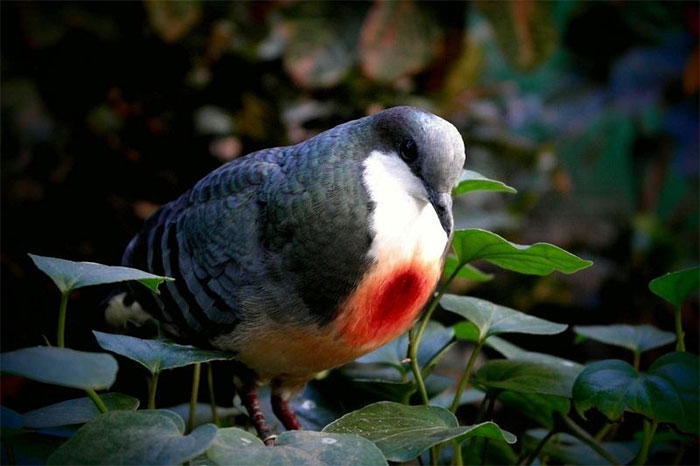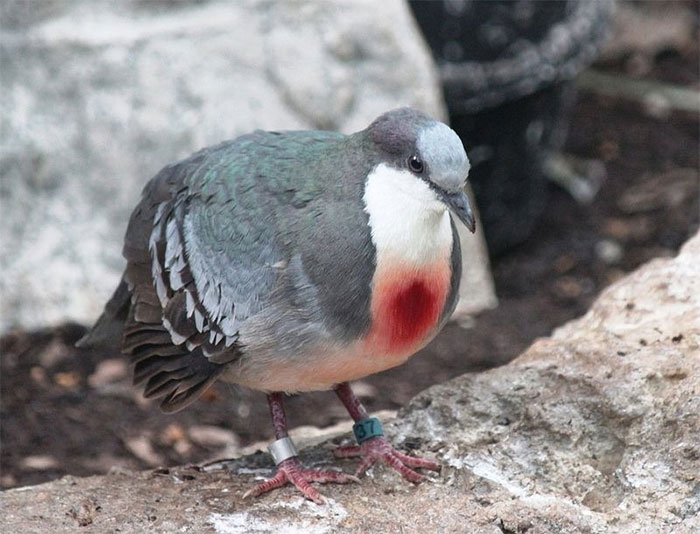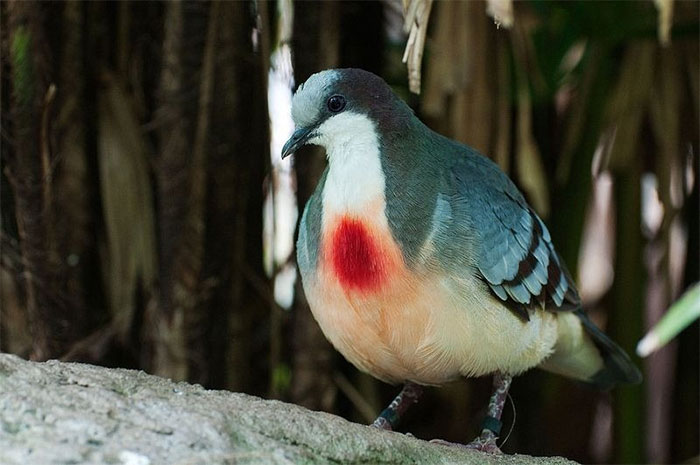The pigeon species endemic to Luzon Island, Philippines, always attracts attention because of its bright red chest that looks like a bleeding heart wound.
Gallicolumba luzonica, scientific name for pigeons endemic to Luzon Island in the Philippines. It is a very shy pigeon, possessing unusual feathers which quickly attracts attention.
 Gallicolumba pigeon luzonica.
Gallicolumba pigeon luzonica.
On the white breast of the dove there is a bright red spot that looks like a bleeding wound. The pale red hair running down the abdomen increases the illusion of blood flowing through the pigeon’s chest. Male pigeon has a brighter red mark. Flirting, she ruffled her chest to accentuate the red part.
Gallicolumba luzonica has a short tail, long legs and pale greenish gray wings, the head with black feathers, but due to the iridescent hair it looks like purple, green, the color changes depending on the lighting conditions .
 The pigeons have numbers to follow the study.
The pigeons have numbers to follow the study.
Their throat, chest, and underparts are white, and lighter red feathers surround the red markings on the breast. Male and female “bleeding heart” pigeons are quite similar in appearance, which is difficult to tell apart.
Luzon’s “bleeding heart” pigeons spend most of their time on the ground looking for seeds, berries and small insects in the leaves. It only leaves the ground and flies through trees when it needs rest or sleep. Nests are usually built on low trees or in shrubs, climbing plants, not far from the ground.
 The bright red hair in the center of the chest looks like a wound between the chest.
The bright red hair in the center of the chest looks like a wound between the chest.
Gallicolumba luzonica is a very shy bird who likes calm and the difficult to observe in its natural habitat. They are found in three islands in the northern Philippines, including Luzon, which is home to many isolated populations, Polillo Island, where a very small population has recently been discovered.
This species inhabits primary or secondary forests and can be found at varying altitudes from sea level up to 1400 meters.
However, these bird populations are declining moderately due to habitat loss and fragmentation due to deforestation and expansion of agricultural land. Additionally, local people often hunt and trap birds for use as pets.


